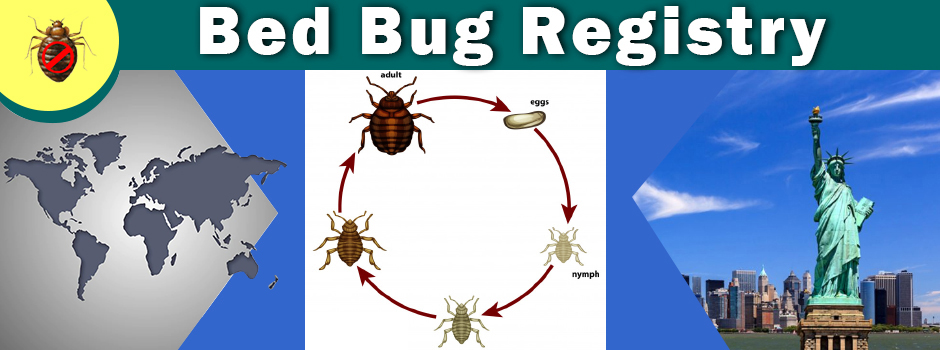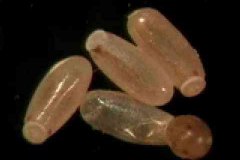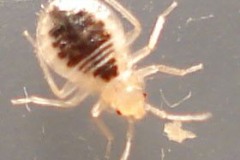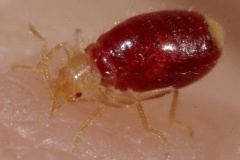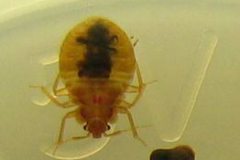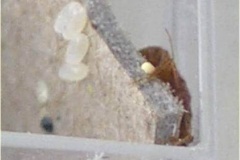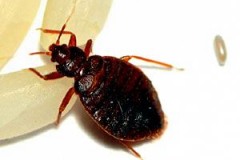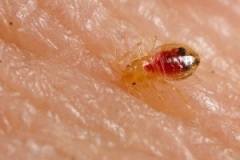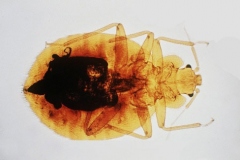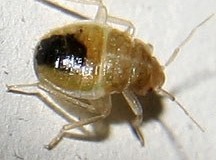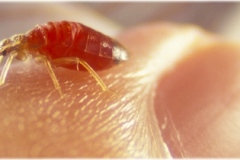Categories
- Bed Bug
- Bed Bug Cream
- BED BUG DATABASE
- Bed Bug Home Remedies
- Bed Bug Oil
- Bed Bug Remedies
- Bed Bug Spray
- Bed Bugs New York
- Bed Bugs Vancouver
- Bed Bugs World
- Bed Bugs American Samoa
- Bed Bugs Canada
- Bed Bugs Guam
- Bed Bugs North Mariana islands
- Bed Bugs Puerto Rico
- Bed Bugs United States
- Bed Bugs Alabama
- Bed Bugs Alaska
- Bed Bugs Arizona
- Bed Bugs Arkansas
- Bed Bugs California
- Bed Bugs Colorado
- Bed Bugs Connecticut
- Bed Bugs Delaware
- Bed Bugs Florida
- Bed Bugs Georgia
- Bed Bugs Hawaii
- Bed Bugs Idaho
- Bed Bugs Illinois
- Bed Bugs Indiana
- Bed Bugs Iowa
- Bed Bugs Kansas
- Bed Bugs Kentucky
- Bed Bugs Louisiana
- Bed Bugs Maine
- Bed Bugs Maryland
- Bed Bugs Massachusetts
- Bed Bugs Michigan
- Bed Bugs Minnesota
- Bed Bugs Mississippi
- Bed Bugs Missouri
- Bed Bugs Montana
- Bed Bugs Nebraska
- Bed Bugs Nevada
- Bed Bugs New Hampshire
- Bed Bugs New Jersey
- Bed Bugs New Mexico
- Bed Bugs New York
- Bed Bugs North Carolina
- Bed Bugs North Dakota
- Bed Bugs Ohio
- Bed Bugs Oklahoma
- Bed Bugs Oregon
- Bed Bugs Pennsylvania
- Bed Bugs Rhode Island
- Bed Bugs South Carolina
- Bed Bugs South Dakota
- Bed Bugs Tennessee
- Bed Bugs Texas
- Bed Bugs Utah
- Bed Bugs Vermont
- Bed Bugs Virgin Islands
- Bed Bugs Virginia
- Bed Bugs Washington
- Bed Bugs Washington DC
- Bed Bugs West Virginia
- Bed Bugs Wisconsin
- Bed Bugs Wyoming
- BedBug Removal
- BedBugs in Michigan
- Canada Bed Bugs
- Do it yourself Bed Bug
- Exterminator Bed Bugs
- Health
- Pest Inspection
- Toronto Bed Bugs
- Welcome to Bed Bugs
Registry Sites List
- Bronx Bed Bug Registry Infestation Maps, Residential And Hotel
- Brooklyn Bed Bug Registry Infestation Maps, Residential And Hotel
- Manhattan Bed Bug Registry Infestation Maps, Residential And Hotel
- Nyc Bed Bug Registry Infestation Maps, Residential And Hotel
- Queens Bed Bug Registry Infestation Maps, Residential And Hotel
- Staten Island Bed Bug Registry Infestation Maps, Residential And Hotel
Recommended Sites
Monthly Archives: October 2022
News Links:
Dont Let the Bed Bugs Bite: The Origin of the Rhyme
Good night. Sleep tight. Dont let the bedbugs bite!
This familiar rhyme is frequently recited by parents to their children as they prepare for bed.
But where does it come from?
There are various myths surrounding its origin.
The phrase sleep tight is thought to refer to 16th and 17th century beds, which were usually mattresses filled with feathers and straw tied to a frame using a lattice of ropes. It was necessary to tighten these ropes frequently to prevent sagging, hence the term sleep tight.
If the ropes were not tight, the mattress could sag to the floor, making it easier for bed bugs on the ground to reach the mattress.
An alternative theory suggests the phrase refers to tying sleepwear tightly to prevent the bugs from easily reaching the skin at night.
Some historians refute these theories and point to the Oxford English Dictionary, which claims sleep tight simply means to sleep soundly.
Etymologist Barry Popik claims the rhyme actually originated in the USA in the 1860s, and in some versions the biting referred to mosquitoes. One version from the 1860s is Good night, sleep tight, wake up bright in the morning light, to do whats right, with all your might.
In a novel called Boscobel written in 1881 by Emma Mersereau Newton, a boy says to his parents, Good night, sleep tight; And dont let the buggers bite. And in the 1884 book Boating Trips by Henry Parker Fellows, a little girl says Good-night. May you sleep tight, where the bugs dont bite!.
The precise phrase Good-night, Sleep tight, Dont let the bedbugs bite first appears in the 1896 book What They Say in New England: A Book of Signs, Sayings, and Superstitions, and it later appeared in a 1923 text by F. Scott Fitzgerald.
The rhyme then became increasingly well known throughout the 21st century, appearing in numerous books and films. So although the true origins of the phrase remain unclear, it has certainly become well established and remains popular to this day.
If you really want to get rid of bed bugs today try SayByeBugs! It was developed as a safe and highly effective alternative among a sea of products that rarely deliver on their promises.
Read more here:
Dont Let the Bed Bugs Bite: The Origin of the Rhyme
Posted in Canada Bed Bugs
Comments Off on Dont Let the Bed Bugs Bite: The Origin of the Rhyme
Manitoulin Blood Feeders: Part II of a series – Fleas, bed bugs, lice and ticks… oh my! – Manitoulin Expositor
EDITORS NOTE: Joe Shorthouse is an entomologist and a professor emeritus with Laurentian University. This article is the second in a series of two examining the Islands relationship with the bity critters with whom we share the land.
by Joe Shorthouse
After discussing mosquitoes, black flies, horse and deer flies in Part I (September 7, 2022), I continue here with fleas, bed bugs, lice and ticks. Ways to reduce being annoyed and fed upon by these blood-feeders is also discussed.
Fleas
Adult fleas are small, yellowish-brown to black, wingless insects about 3 mm in length specialized for life on furry or feathered animals feeding on blood to survive and reproduce. They are laterally flattened shaped like a coin standing on end.
Adult fleas have stiff backward-pointing hairs which makes it easy for them to move through their hairy hosts while making them difficult to dislodge by grooming. They have muscular legs, each with a pair of claws used to grasp hairs.
The immatures of fleas look like tiny caterpillars and do not feed on blood. Instead, they feed on faeces and organic material found in the beds of dogs and cats.
There are about 300 species of fleas feeding on birds and mammals in North America, with about 127 in Canada. Fleas traditionally do not bother people on Manitoulin Island, but anyone with a dog or cat knows they sometimes bite the owners.
Fleas cause major discomfort to cats and dogs and can lead to an eczematous itchy skin disease called flea allergy dermatitis. The bites often appear in clusters or lines of two and can remain itchy and inflamed for several weeks.
Newly formed adults can lay dormant in a hosts bed for up to a year, until a host animal is detected. They detect a potential host (sometimes a human) using cues such as low-frequency sound, vibration and increases in temperature and CO2 levels.
Adult fleas are effectively removed from the fur of pets using a fine-toothed flea comb, and are most easily spotted against a light background, such as a white sheet. Flea infestations are controlled by first eliminating adult fleas, and then by eliminating larvae and pupae.
A number of products are available at pet stores for treating adult fleas both on pets and in the home. Immature stages can be removed by washing pet bedding, vacuuming or steam-cleaning carpets and furniture, and by carefully cleaning floors and baseboards where pets sleep.
Being blood feeders makes fleas potential transmitters of diseases such as bubonic plague where they transmit a bacterium from rodents to humans. There are no diseases caused by fleas on Manitoulin Island.
Bed bugs
Adult bed bugs are small, reddish brown, flattened and oval, wingless insects about the size of an apple seed (5-7 mm in length) which makes it easy for them to hide in tiny crevices.
They have been a pest throughout human history causing itchy bites and irritation. They were so common in the past, people accepted them as a part of their lives, reflected in the popular saying Good night. Sleep tight. Dont let the bed bugs bite.
Bed bugs creep us out because they crawl over our bodies while we are sleeping, suck our blood, then take refuge in folds of mattresses, carpets, under baseboards, and wallpaper.
They feed only at night by piercing the skin with two hollow tubes and injecting saliva with anticoagulants in one, then sucking up blood through the other. In most cases, victims of these tiny vampires are unaware that they are donating blood because of anesthetics in the saliva. Each feeding takes 3-12 minutes.
Bed bugs have five progressively larger nymphal stages, each requiring at least one blood meal before moulting to the next stage. The entire life cycle from egg to adult requires five weeks to four months, depending on temperature and availability of blood meals.
Both males and females feed on blood. Each female can produce hundreds of eggs in her lifetime, but when blood is unavailable, they can remain dormant for months. They have the uncanny ability to detect our bodies from a distance and can walk along the ceiling then accurately drop onto our beds and join us under the covers.
We have come to associate the presence of bed bugs with a lack of cleanliness; however, they frequently show up in immaculate homes. Bed bugs dont care if their environment is clean or dirty; all they need is a warm host and plenty of hiding places.
Unfortunately, bed bugs have become increasingly common since the 1990s. Their resurgence is likely due to increased global travel and commerce, ease of movement of infested items, resistance to pesticides, and changes in pesticides available for their control.
The Sudbury and District Health Unit does not keep records of bed bug findings on Manitoulin Island, but there is always the potential for infestations. Learn to recognize signs of their presence such as rusty stains on bed sheets or mattresses caused by bed bugs being crushed, dark spots which are excrement, or live bed bugs.
Bites on the skin are an unreliable indicator of an infestation because bed bug bites look like bites from other insects (such as mosquito), rashes (such as eczema or fungal infections), or even hives. Victims of bedbugs usually wake up to a distinctive row of three bite marks.
Bed bugs rely on humans to move them from one building to another. Bed bugs were likely first brought to all the islands in the Great Lakes in the canoes of early explorers.
Bed bugs are exceptional hitchhikers, travelling on clothing, bedding, luggage, furniture and cardboard boxes. As a result, they can be found in hotels, cruise ships, airplanes, trains and buses. Always check old mattresses and furniture for bed bugs before bringing them into your home.
If found in your home, find a reputable pest control company to treat the infestation early with insecticides before it becomes established or spreads. Steaming, vacuuming and applying insecticides to mattresses, pillows and beds eliminates bed bugs. Placing your luggage in plastic bags when in hotel rooms suspected of having bed bugs prevents transporting them home.
Bed bugs do not carry or transmit diseases. They are not a dangerous medical threat; however, the discovery of bedbugs in homes or hotel rooms results in considerable stress.
Lice
Lice are tiny insects about 1mm in length, oval, and usually yellow to white and sometimes with a red belly. They have fed on us throughout human history. The phrases you nit picker or I am feeling lousy reflect the human disdain for these insects.
Two kinds of lice are found on humans head (or body lice) and pubic lice. Head lice are commonly called cooties whereas pubic lice are called crabs. Both kinds spend their entire life cycle on humans. They cannot live off our bodies for more than 24 hours and are never found on pet dogs and cats.
Lice spread between people by crawling from the hair of one infested person to another. Adult head lice can live for 30 days on a persons head and lay 150 250 eggs during its life cycle.
Eggs of head lice are called nits and are glued to the base of hairs near the scalp. They take about one week to hatch. Nymphs become adults about 7 10 days after hatching.
Pubic lice attach themselves to coarse hairs in the pubic region, eyebrows, eyelashes, beards and armpits. They are sometimes charmingly described by the phrase papillons damour or butterfly of love (no further explanation needed in a family newspaper).
Lice take blood meals about six times a day. They inject saliva at each feeding which causes inflammation leading to intense itching. Itching leads to scratching and secondary bacterial infections. An itching scalp is the chief symptom, whereas presence of viable nits confirms the diagnosis.
Head lice infestations, or pediculosis, commonly occur among young children on Manitoulin Island during the winter. They spread from infected children when coats and hats are piled together or sharing bike helmets, brushes and head phones.
Lice were likely common among all the early peoples of Manitoulin Island, both Indigenous and settler peoples.
Head lice are not a significant health hazard nor an indication of poor hygiene. However, several infectious diseases such as epidemic typhus, relapsing fever, and trench fever can occur when people live in poor-hygiene caused by war, social disruption, or severe poverty. No diseases associated with lice are found on Manitoulin Island.
Head lice are detested especially among children and their presence usually results in fear and frenzied attempts to get rid of them. When active lice or nits are detected, it is important not to panic as they are easy to eliminate by using shampoos containing the insecticide pyrethrin, readily available at pharmacies. Ivermectin lotion such as Sklice is a topical, single-dose treatment applied directly to the scalp for 10 minutes and then rinsed with water.
If lice are detected, wash all clothing, bedding, hats, stuffed animals, and towels with hot, soapy water at 50C and dry them at high heat for at least 20 minutes. Wash combs and brushes and soak them in rubbing alcohol for an hour.
Ticks
Ticks are not insects as they have four pairs of legs and two body parts. However, they have life cycles similar to insects whereby they start off at the egg stage, followed by nymphal stages, and then the adults. Nymphs look like small adults.
Common ticks in Canada include the blacklegged tick, more commonly known as the deer tick, the brown dog tick, and the American dog tick.
Unfed adult female blacklegged ticks are spider-shaped, approximately 3 to 5 mm in length and red or dark brown. Adult blacklegged ticks are smaller than the more common American dog tick.
Ticks cannot fly or jump and instead move about by climbing onto low vegetation and clinging onto passing mammals such as deer, dogs or people. Once ticks grasp hairs, they walk about on the skin then cut a hole and sink in their mouthparts. They attach a harpoon-like barbed structure near their mouthparts while injecting anticoagulant.
The average life span of an adult tick ranges from one to three years. They typically take a blood meal at each stage of the life cycle and when full grown can consume 100 times their weight in blood and become swollen. After engorging on the blood, they fall off and find shelter somewhere until they need to take another meal, then the process starts again.
Peak tick season for nymphs occurs during the spring and summer months, while adults are a threat in the late fall. They are usually found in wooded areas and areas overgrown with tall grasses.
When walking through areas of tall grass inhabited with ticks, wear light coloured clothing that makes it easier to spot ticks. Wear long-sleeve shirts and tuck your pant legs into long socks. Spray the lower parts of your pants, socks and shirt sleeves with insect repellent.
Do a full-body check before re-entering your home to ensure no ticks have attached to your clothing or pets. Examine your body when you shower or bath paying attention to arm pits, crotch and the site of bra straps.
Ticks are important vectors of Lyme disease. Early symptoms of Lyme disease include fatigue, fever, headaches, and rashes. One sign of the onset of Lyme disease is a bulls eye rash around the feeding site; however, not all people fed upon by a tick show the rash.
If a feeding tick is found and its mouthparts are sunk into your flesh, it must be removed with a pair of forceps (tweezers). Place the forceps on either side of the head region of the tick and gently pull without leaving any parts within your skin. Wash the area with soap and water.
Ticks on Manitoulin Island have tested positive for Lyme disease. Reporter Lori Thompson wrote about ticks and Lyme disease in the June 17, 2020 issue of The Manitoulin Expositor. This disease is caused by a bacteria spread by the bites of infected blacklegged ticks. A visit to a doctor to receive a dose of antibiotics is usually enough to treat the early stages of Lyme disease.
How to Avoid Blood Feeders
An exhibition at the Royal Ontario Museum in 2019 entitled Bloodsuckers: Leeches to Legends informed us that 30,000 species of animals around the world feed on blood. The show drew on science, medicine, popular culture and the supernatural to provide a refreshing perspective on the animals we have come to hate and fear.
People have been bothered by blood-feeding insects throughout history, and in many cases, we have learned to live with them. Mosquitoes and black flies, for example, are an irritating but inescapable part of the Canadian experience.
Mosquitoes were just one of the ROM stars in a much larger cast of squirm-inducing creatures that are united in their quest for the liquid lunch that flows through our veins.
At one time, our effort to eliminate many pest insects was centred on the insecticide DDT. At first it killed vast numbers of insects, but in time it bioaccumulated in the tissues of animals, including humans and birds resulting in an environmental disaster. No pests were eliminated by DDT while some became resistant and their numbers increased.
We also must recognize that larvae and adults of mosquitoes and black flies serve as food for the immatures of our sport fish. Males of mosquitoes and black flies are pollinators. Many species of birds and frogs eat adult blood feeders, so eliminating blood feeders would eliminate many fish, birds and frogs.
While the prospect of Manitoulin becoming free of blood-feeding insects is seductively attractive, past history has shown that attempts to exterminate has proven harmful and we instead should learn to avoid them.
It helps to understand their biology and avoid being in places when and where they are most abundant. Wear long-sleeved shirts, long pants and a hat when outdoors in biting fly season. Tuck your pants into your socks helps keep biting flies and ticks from getting under your clothing. Mosquitoes are attracted to dark moving objects so wear white, tan or yellow clothing.
Netting that covers the head, like the bonnets used by beekeepers, provides protection when biting flies are at their peak. Avoid wearing sweet-smelling perfumes and deodorants, or clothing tainted by fabric softeners. Dont eat candy or consume soft drinks when outdoors as their odours attract black flies.
Mosquito pics or coils help keep mosquitoes from coming indoors. Pics are a repelling incense made with pyrethrum powder which is a natural insect repellent. Pics can burn for up to 5 hours and like candles, should never be left unattended.
The best way to avoid biting flies and ticks is to apply repellents with a high percentage of DEET (Diethyl-meta-toluamide) to exposed body surfaces. Spray it on your hat, arms, pant legs, socks, and exposed skin. Never spray repellents directly on your face and spray in well-ventilated areas away from food.
Always read the recommended levels before applying repellents on yourself and children. Safe and effective repellents are sold in most pharmacies, grocers, and outdoor stores in Canada. Sunscreen and insect repellent can be applied at the same time.
It is unfortunate that TV advertisements tell us that a chemical barrier must be laid down to prevent any creepy-crawlies from entering our homes and gardens, without mentioning the harm many such chemicals cause to human health and pets. As a result, many home owners regard all insects that enter their household with contempt which is both unfortunate and harmful.
Follow this link:
Manitoulin Blood Feeders: Part II of a series - Fleas, bed bugs, lice and ticks... oh my! - Manitoulin Expositor
Posted in Canada Bed Bugs
Comments Off on Manitoulin Blood Feeders: Part II of a series – Fleas, bed bugs, lice and ticks… oh my! – Manitoulin Expositor
Bed Bug Treatment Synergy
Bed Bug Various Treatments work in Synergy. The 1 + 1 = 3
 The transmission of bed bug eggs is also an issue. It is not uncommon for the live bed bugs amongst an infestation to be completely eradicated during an effective treatment cycle only to have the remaining or surviving eggs hatch and re infest the location. The bed bug eggs themselves are usually unaffected by and/or not killed by most approved pesticides. The eggs can also have an incubation period of up to several weeks and may be deposited in hidden areas that are difficult to penetrate, difficult to find, or simply hidden away from what otherwise would have been a quick lethal treatment (i.e., lethal treatment such as the killing of a bed bug's eggs through heat'”by hot ironing fabric surfaces where bed bugs have hidden, through steaming [typically using a fabric steamer], via direct machine drying, or through a procedural use of boiling water, etc.). This stubborn tendency of bed bug infestations towards reemergence can be incredibly problematic and all the more difficult to detect, due to the now smaller size of the newly re-emerged bed bug nymphs and their propensity for hiding in small, hard-to-find locations. Re infestation can be more difficult to discover early enough due to a corresponding decrease in the 'size' of infestation symptoms, such as fewer and now much smaller fecal droppings (resembling pinhead-sized dabs from a black permanent marker) which may be scattered and difficult to detect. There may be other evidence of re infestation, like sloughed-off skins which are tinier in size. Really, though there are only two types of synergy - to find out what they are, watch the video:
The transmission of bed bug eggs is also an issue. It is not uncommon for the live bed bugs amongst an infestation to be completely eradicated during an effective treatment cycle only to have the remaining or surviving eggs hatch and re infest the location. The bed bug eggs themselves are usually unaffected by and/or not killed by most approved pesticides. The eggs can also have an incubation period of up to several weeks and may be deposited in hidden areas that are difficult to penetrate, difficult to find, or simply hidden away from what otherwise would have been a quick lethal treatment (i.e., lethal treatment such as the killing of a bed bug's eggs through heat'”by hot ironing fabric surfaces where bed bugs have hidden, through steaming [typically using a fabric steamer], via direct machine drying, or through a procedural use of boiling water, etc.). This stubborn tendency of bed bug infestations towards reemergence can be incredibly problematic and all the more difficult to detect, due to the now smaller size of the newly re-emerged bed bug nymphs and their propensity for hiding in small, hard-to-find locations. Re infestation can be more difficult to discover early enough due to a corresponding decrease in the 'size' of infestation symptoms, such as fewer and now much smaller fecal droppings (resembling pinhead-sized dabs from a black permanent marker) which may be scattered and difficult to detect. There may be other evidence of re infestation, like sloughed-off skins which are tinier in size. Really, though there are only two types of synergy - to find out what they are, watch the video:
AC_AX_RunContent( 'width','500','height','405','align','left','style','margin-right:3px;','src','https://www.youtube.com/v/aK9c4WhB0nI&hl=en_US&fs=1&border=1','type','application/x-shockwave-flash','allowscriptaccess','always','allowfullscreen','true','movie','https://www.youtube.com/v/aK9c4WhB0nI&hl=en_US&fs=1&border=1' ); //end AC code Use of steam or by spraying rubbing alcohol on any visible insects is done to effectively rid bed frames of adult bed bugs and eggs, although it does not serve as a permanent treatment. Small steam cleaners have been very effective for local treatment.
When it is necessary to live with bed bugs in the short term (either during treatment or while in the process of figuring out the best approach for treatment), it is possible to create a makeshift, temporary barrier around a bed that will help prevent bed bugs from crawling back onto it. A successful barrier, however, assumes the entire bed itself has been completely disinfected of all bed bugs and their eggs beforehand. Using such a strategy to isolate a bed can provide immediate relief and comfort from further bed bug bites.

The technique can also be used to help prevent bed bugs from crawling up along walls where warranted. Long strips of this taping method (i.e., curled duct tape over painter's tape) can be used on standard floors to cordon off, surround, and isolate infested furniture, to protect clean furniture, or as part of a treatment effort to help prevent bed bugs from crawling toward specific areas. If used this extensively, it then becomes particularly more important to apply a protective layer of painter's tape first to prevent the duct tape from damaging and/or ruining painted surfaces or from leaving behind a sticky residue when finally pulled up. It should also be noted that the width of the painter's tape can be as narrow as one inch (which is typically less expensive per foot than wider versions of masking tape) since regular duct tape, though much wider initially, will fit within the one-inch width of the painter's tape'”after the duct tape has been curled over on itself lengthwise.
 Encasing mattress and box springs in impermeable bed-bug-bite-proof encasements after a treatment for an infestation is an alternative treatment which works better and is more comfortable whereas wrapping bedding in plastic causes sweating.
Encasing mattress and box springs in impermeable bed-bug-bite-proof encasements after a treatment for an infestation is an alternative treatment which works better and is more comfortable whereas wrapping bedding in plastic causes sweating.
Detection of bed bugs will be required during infestation as well as after initial treatment efforts. And the difficulties associated with treating bed bugs as well as the possibility of re infestation means that detection has to be an ongoing process. Daily periodic monitoring for their signs is a good idea even up to several months after an infestation has been cleared or as a preventive measure in suspected areas. It is recommended to search throughout all cracks and crevices (on beds, couches, chairs, furniture, etc. checking underneath as well) using a flashlight to search for signs of bed bugs or for the bugs themselves. And, when searching a dark room at night, bed bugs may be spotted crawling about looking for a blood meal but will usually remain completely stationary congregating in ideal hiding spots nearest to the host.
Effective experience in locating them will also contribute to accurately confirming whether or not a bed bug infestation has been thoroughly eliminated. And can also provide additional assistance to pest control operators which is required for successful treatment, or allow one to, perhaps, eradicate a moderate to light infestation altogether on their own.
Posted in BED BUG DATABASE
Comments Off on Bed Bug Treatment Synergy
United States, Bed Bug Registry Map World, Bed Bug Registry Map …
If youve got a pet, you have heard about or dealt with fleas.
A nuisance to furry animals around the world, they cause pain, discomfort, and irritation for any creature unfortunate enough to end up carrying them.
Worse yet, fleas are not the only small critters that can invade your home and your pets personal space, and theyre difficult to distinguish from fleas.
Although the insects discussed here differ from fleas, that does not inherently mean they are more or less harmful.
Even the least dangerous of these insects should still be treated as a sort of threat or simply as an invading force, and proper precautions should be taken before youve identified the insect youre dealing with.
With this in mind, this piece will discuss what fleas are, how you can tell them apart from other insects, and what insects most closely resemble the features of a flea.
Additionally, this article will provide some information on each of these lookalikes so that you can determine whether or not your home/pets are at risk.
Plain and simple, a flea is a tiny, light brown insect that averages around 5 millimeters in size.
Its body is flat, and they have no wings to speak of, but thats for a good reason.
Their defining feature is their incredible ability to jump at comparatively superhuman heights, reaching 30 centimeters in height.
Thirty centimeters sounds measly to humans; thats just 30% of a meter, hardly impressive.
Another way to think about it is this: 30 cm is over 80 times larger than their average height.
This would be similar to a 5-6-foot-tall (approx. 1.5-2 meters) human easily jumping 480 feet (~145 meters) into the air.
Why use wings when they can easily bound over anything in your way?
Being able to jump this far with one leap means that they are able to spread incredibly quickly with relatively little effort.
Fleas are also well known for their tendency to bite their host, which is especially dangerous since fleas often carry diseases the Black Plague wasnt spread by rats but by the fleas that tagged along with the rats.
While a similar plague (barring COVID, of course) may not be a primary concern, researchers have continued to find that fleas still carry a plethora of dangerous bacteria and pathogens harmful to animals & humans alike.
So, knowing these primary assets, identifying a tiny brown, flat-bodied, wingless flea that can jump incredibly high should be a cinch, right?
If only it were so easy.
Identifying a flea is already a challenge in itself due to its nearly microscopic size, its jumping capabilities, and its rather muted colors.
Though their characteristics may appear defining at first, it has been found that there are several other insects that are identical in looks, size, jumping capabilities, and even their capacity to bite.
Here are some of the most commonly confused bugs that have people thinking theyre dealing with an infestation of fleas.
These bugs are perhaps the most similar to fleas out of this entire list in terms of their looks.
Theyre flat, brown, and essentially the same size (5 mm on average) as fleas.
Bed bugs like to make their homes, where else, within the fibers of your bed.
While they call beds home, they are still bloodthirsty for both humans and animals, whichever is easier to get and can become a big problem if left unchecked.
Similarities
Bed bugs are similar for all of the reasons already stated: they look nearly identical, being flat, brown, and tiny, and they love to bite humans/animals to get their sustenance.
Their main meal of choice is blood almost exclusively, just like fleas, and they also lack wings.
This makes it quite difficult to tell bed bugs apart without further research.
Differences
There are 3 ways to discern a flea from a bed bug: the leap, the bite marks, and the eggs.
First, bed bugs cannot jump, which is the most significant indicator here.
If it cant jump, then it isnt a flea.
Second, flea bite marks are clustered and resemble mosquito bites. Bed bugs are slightly larger and have flat welts.
Finally, if you find bed bug eggs, they will appear black fleas, opposingly, lay bright white eggs.
These little insects love moisture and feed on mold and fungus.
Springtails are generally grayish or brown in color and can easily be identified as flea due to their ability to jump high, which is a key part of their namesake.
Additionally, these bugs are quite minor and barely reach a few millimeters in size as a fully grown adult.
Similarities
Theyre small, can leap great distances, and lack wings, all similar traits to a flea.
Their size is a great asset to them, enabling them to feed as they please with little risk of detection.
Being able to jump is the largest cause for being misidentified as a flea alongside their brownish color.
Differences
First, springtails do not bite living hosts like fleas (or bed bugs) do.
Instead, as previously mentioned, they are far more interested in feeding on organic matter or fungi that are decaying to sustain themselves.
Because of this, they never bother humans or animals since they do not need them.
Second, their body is differently shaped compared to flea.
This is hard to tell without getting an extremely close look, but springtails have a rounded body that is soft fleas are flat and have a durable structure.
Flea beetles are the plant-loving cousins to fleas (used loosely since they are not nearly that closely related).
Instead of spending time munching on humans for sustenance, they focus on various plants.
Although they have different food preferences, these little guys are often mistaken for fleas for other reasons.
Similarities
Like fleas, flea beetles are great jumpers with a similar color scheme.
These bugs jump from plant to plant among great fields rather than from human to human, but they are still regarded as a pest because of their ability to spread quickly.
Additionally, their brownish coloring makes them the perfect candidate to frame fleas for their presence.
Differences
Flea beetles do not bite animals or humans and exist in an entirely different habitat than fleas.
Dont be fooled; they can still bite; they just prefer to chew through thousands of leaves over time rather than through the skin.
Accordingly, it is rare to find them inside any houses unless they have an abundance of plants.
Froghoppers are sap-sucking insects that are brown and color and measure out to about 6 mm on average.
They are well known for their tendency to leave plants coated in foamy spit once they are done feeding, but they also beat the flea at their own game in jumping.
This makes them incredibly easy to be mistaken for a flea.
Similarities
So, the color and jumping capability of froghoppers certainly both match that of a flea.
Being brown and capable of jumping nearly 70 cm, its no wonder that froghoppers are constantly being misidentified as fleas.
Differences
The froghoppers jumping ability lends quite well to one of its primary differences.
Jumping up to 70 cm in one bound is over double what a flea can jump, though it would still be difficult to tell these two apart with just this information alone.
Froghoppers also occupy an entirely different habitat than fleas and have no interest in using animals/humans for a meal.
Grasshoppers and crickets are both smaller insects that have great leaping capabilities.
They are often found outside during the summer months and prefer to stay as from humans as they can.
Crickets are generally omnivorous and will opt to eat whatever is most easily available, whereas grasshoppers are herbivorous.
Crickets tend to be yellowish-brown in color, and grasshoppers are usually varying shades of green/brown.
Similarities
In terms of colors, these two insects are quite close, though they both tend to lean towards green (grasshoppers) and yellow (crickets).
They are also capable of making jumps similar to that of the flea in comparison to their size.
Differences
Regarding the rest of this list, these two are harder to mistake for a flea than the others.
Right away, both crickets and grasshoppers are much larger than fleas.
They also inhabit entirely different ecosystems grasshoppers, being herbivores, want nothing more than to stay in the fields, and crickets prefer to hunt/mate at night away from human activity as part of their native environment.
The Conclusion
Though vastly different upon closer inspection, all of these insects can easily be mistaken for fleas.
Fleas can be difficult to identify in any case, but hopefully, this article has given some tools to make the distinction easily in the future.
Share the post "5 Bugs That Look and Jump Like Fleas"
Welcome to ProShieldPest.com. I am Tina Jones. I have been lately working as a pest removal professional in Winslow, Arizona. At present, I love to spend my time with my family as a retiree.
Here I share all my knowledge and experiences to help people understand better how they can stop pests at their homes without actually killing them. Hopefully, the information you will find here useful can help in safeguarding your home! You can check more about me here.
Or in case you need to hire professional pest control services near your area, you can Click Here to get a free instant quote now. We have already partnered with exterminators and companies to bring you exclusive discounts. Get in touch with them and we assure you get the priority service for all your pest control and wildlife removal needs.
Read the rest here:5 Bugs That Look and Jump Like Fleas - ProShieldPest.com
Read more:
United States, Bed Bug Registry Map World, Bed Bug Registry Map ...
Posted in Bed Bugs Vancouver
Comments Off on United States, Bed Bug Registry Map World, Bed Bug Registry Map …
Bed Bug Videos
Yet, around this time began the re-emergence of a little insect pest, one thought long relegated to history, and since the start of 2000 it has become so common that in some parts of Australia it is almost impossible to find accommodation facilities without them. Unfortunately, this little insect has a preference for blood, with guests being the usual victim, and getting rid of this pest is both challenging and expensive. In fact, it is likely that the accommodation industry is losing tens to possibly hundreds of millions of dollars in combating this six legged blood sucker. Thus it appears that a millennium bug did arrive after all, although in this case, they are better known as Bed Bugs.
Bed bugs are insects and are related to the aphids and cicadas that appear in the garden; the difference being that bed bugs have developed a predilection for blood. The adult bed bug is around 5-6mm in length and up to almost 1cm when fully engorged with blood. They are flat and round in Bed Bugs: The Unwanted Guest body shape with deep dark red coloration, becoming almost black when full of blood.There are five juvenile stages, which range from 1-4mm depending on the stage and are cream in color when unfed.The development time of the lifecycle at 22oC is around two months, the adult female can lay up to 500 eggs throughout its life, and populations can become abundant in a short time.
Gale Brewer discusses the legislative process and the NYC Bed bug Menace from Kate Nocera on Vimeo.
Bed bugs, as their name implies, invade beds where they bite the sleeping victim.The bite can be painful and restless sleep often results. During biting, the bed bug injects saliva and this can cause various skin reactions such as the development of small indistinct red spots. Often these develop into large wheals, 2-5cm across, which are extremely itchy and very uncomfortable. In some cases hospitalization may be required if a severe allergic reaction develops, and the costs are usually borne at the expense of the facility. Fortunately, bed bugs do not transmit disease and often the most severe reaction relates to the mental trauma of being bitten. For many there is still a social stigma associated with bed bugs and people are often horrified and disgusted after being bitten, and claim to feel 'œdirty and unclean'. In such By STEPHEN DOGGETT circumstances it may become almost impossible to pacify upset guests and the Executive Housekeeper must demonstrate empathy in dealing with this challenging situation. Without a doubt, the greatest impact of bed bugs is that of the financial burden they impose on the accommodation industry. Guests bitten may refuse to pay the tariff and are not likely to return. Some resorts have even refunded whole holidays when guests have been severely attacked. Control is expensive and costs of $1,000 or more per room are not unheard of, especially in heavy infestations when multiple treatments and inspections will be required. During treatment, the affected room needs to be closed for a minimum of seven to ten days as the eggs will hatch (the insecticides do not kill the egg stage) and guests may be bitten during this period. There are reports of rooms being closed for two to six months in difficult to control infestations.The latest threat to the accommodation industry is that of litigation. One company in the United States was recently fined approximately AUS$500,000 after being found negligent when guests were badly bitten. Other court cases have followed and the hotelier rarely wins. As Australia is one of the most litigious countries in the world, it is just a matter of time before a facility is sued after a guest is attacked by bed bugs.
One Victims Story
The Horror of Bed Bugs and How to Effectively Treat them
Bed bugs become established in structures when they hitch a ride in boxes, baggage, furniture, bedding, laundry, and in and on clothing worn by people coming from infested sites. Poultry workers can carry bed bugs to their residences from their places of work. Bat bugs, poultry bugs, swallow bugs, and others are typically transported to new roosts by the principal host. An accurate identification of the bed bug species involved is essential to an effective control strategy. Many control failures can be traced to an incorrect identification. Bed Bugs Cimex lectularius L. Figure 1. Adult bed bug. Bed bugs hides in cracks, crevices, and seams during the day. They prefer narrow crevices with a rough surface where their legs and backs touch the opposing surfaces. Bed bugs cannot climb glass or smooth, plastic surfaces. Wood and paper surfaces are preferred to either stone, metal, or plaster; however, in the absence of preferred sites or during high population numbers, the latter will also be utilized. The aforementioned cracks and crevices should be filled with appropriate fillers, such as caulking.
The Horror of Bed Bugs and their eggs and how to kill them in your home. Safe and effectively from Rachel Mitchell on Vimeo.
Bugs will sometimes hide in the crevices of upholstered furniture and mattresses created by folds, buttons, and cording. Thoroughly vacuum all upholstery'”including the undersides'”mattresses, and pillows. Launder bedding and dry in a warm air dryer. Mattresses, upholstered furniture, and cushions can be treated with 'œdry' steam. It is best to use two professional-grade steamers with low vapor flow rates, each with one-gallon capacities. This allows one unit to always be hot between water refills. The steam should exit through a wand with multiple ports
Posted in BED BUG DATABASE
Comments Off on Bed Bug Videos

 Residence
Residence  Location
Location 

